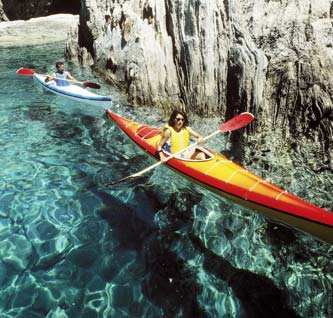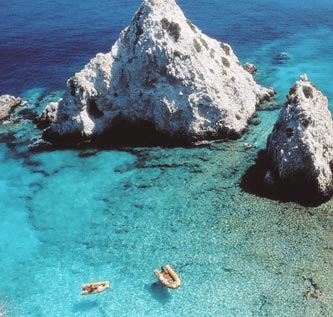Compañía de los parques, promoviendo el turismo sostenible
Cuáles resultados
El modelo operativo innovador de Compañía de los Parques ha alcanzado resultados muy importantes:
• Ha promovido el mantenimiento de valores de identidad de las áreas protegidas de Italia, favoreciendo el renacimiento de un orgullo de pertenencia en poblaciones que habían permanecido económicamente débiles y socialmente marginadas.
• Ha creado nuevos modelos operativos y funcionales para los Entes Parque, para que se conviertan en “incubadoras” del desarrollo de las áreas protegidas y no en simples actores de la protección.
• Ha generado desarrollo económico local, poniendo a producir un patrimonio inmobiliario en degrado.
• Ha dado dignidad de producto turístico a las áreas protegidas. Si hoy el turismo en los Parques se ha convertido en una realidad importante e imprescindible del sistema de las ofertas de la marca Italia, se le debe a CDP.
Compañía de los Parques ha promovido y organizado la oferta turística nacional, operando en 16 áreas protegidas:
• Parque Nacional del Gran Sasso-Monti de la Laga- Región Abruzzo y Marche
• Parque Nacional de Abruzzo Lazio y Molise – Regiones Abruzzo, Lazio y Molise
• Parque Regional del Monte Cucco – Región Umbria
• Parque Nacional de los Montes Sibillini – Regiones Marche y Umbria
• Parque Regional Sirente Velino – Región Abruzzo
• Parque Nacional de la Majella- Región Abruzzo
• Reserva Natural Regional de Zompo lo Schioppo – Región Abruzzo
• Reserva Natural Regional Monte Genzana Alto Gizio – Región Abruzzo
• Parque Nacional del Gargano – Región Puglia
• Parque Nacional de Le Cinque Terre – Región Liguria
• Parque Nacional de le Dolomiti Bellunesi – Región Veneto
• Parque Nacional de le Foreste Casentinesi, Monte Falterona e Campigna – región Emilia Romagna y Toscana
• Parque Nacional del Pollino – Región Basilicata y Calabria
• Parque Nacional del Vesuvio – Región Campania
• Parque Nacional del Cilento y Valle de Diano – Región Campania
• Parque Regional del Delta del Po – Región Emilia-Romagna
Los resultados de impacto de Compañía de los Parques, se hacen más evidentes al describir los resultados alcanzados en el Parque Nacional del Cilento y Vallo de Diano.
Los resultados en el Parque Nacional del Cilento y Vallo de Diano
El parque Nacional del Cilento y Vallo di Diano se encuentra en la Región Campania y abarca el territorio de 80 Municipios de la Provincia de Salerno.
La realidad socio-económica se caracteriza por: Una dependencia significativa de la economía local de las transferencias de renta externas, mediante pensiones, remesas de los emigrantes, flujos financieros relacionados al turismo estacional; Un bajo nivel del indicador relativo a la variedad de las actividades productivas, que constituye un elemento de debilidad estructural de la economía local; Un crecimiento de los residentes muy reducido con respecto al resto de la Región Campania, sobretodo en las áreas de montaña y en el área interior del Parque; Una diferencia significativa entre los Municipios costeros del Parque, más desarrollados, y aquellos de montaña; Una tasa de analfabetismo del 6,9% (en algunos Municipios supera el 10%); Un número de personas sin título de estudio par al 19,2% contra el 15,8% en Provincia; Un número de bachilleres equivalente al 13,3% contra el 16,2% en Provincia. 
En el último decenio, el territorio registró un mejoramiento en el movimiento turístico equivalente al 6%, que interesó principalmente la zona costera, capaz de atraer tanto a los extranjeros como a los italianos. Para ofrecer también a las áreas más marginales una posibilidad de decolaje, eran necesarias políticas de intervención específicas, e iniciativas integradas capaces de ofrecer paquetes que asocien a las bellezas naturales del mar también la cultura, el deporte y la cocina. La zona de colinas y montaña del Parque, antes de la intervención de CDP, había aprovechado muy poco del potencial representado por el turísmo. Por otro lado la costa, con su oferta hotelera espontanea, de pequeñas dimensiones y modesta calidad, y el alquiler privado de inmuebles, resultaba estropeada por un desarrollo urbanístico de pésima calidad.
Compañía de los Parques constituyó un Centro de Aprendizaje (Learning Center) con la función de nodo central y “catalizador” para la creación de un network de Centros Informativos Turisticos periféricos, y de referencia para la red de los actores territoriales. CDP logró los siguientes resultados:
• Se creó en el territorio del Parque una red de 8 Centros de Información Turística CIT, terminales formativos, informativos y de consultoría, conectada al Centro de Aprendizaje (Learning Center). La red ha prestado servicios para orientar la Administración del Parque hacia estratégias de gestión capaces de transformar las economías de subsistencia en políticas más típicas de las economías maduras.
• Se realizaron recorridos formativos en el Centro de Aprendizaje (Learning center), dirigidos a operadores de la información y orientadores, tutores, formadores, coordinadores del Centro y de los terminales periféricos, creando las premisas para el funcionamiento de la red de los CIT.
• Se realizaron acciones de participación activa, con información específica, participación en ferias y exposiciones locales, apertura de mesas reales y virtuales de diálogo.
En los 8 Centros de Información turística fueron realizados módulos de formación a distancia, predispuestos por CDP y el Centro de Aprendizaje. A continuación los 8 CIT fueron agregados a la red de Compañía de los Parques. Cada CIT está dotado de estructuras operativas propias y está conectado al Centro de Aprendizaje a través de la web (msn messenger). Las estructuras operativas del network ofrecen servicios de formación e información turística. Son los instrumentos operativos de la CDP, actuando como intermediarios para la oferta turística local real (estructuras receptivas existentes) y potencial (casas disponibles para recibir turistas) 
Resultados de impacto en el Parque
El Centro de Aprendizaje da empleo a 2 profesionales para la formación y la asesoría orientativa. Estos operadores desarrollan competencias prefesionales e instrumentos operativos para activar iniciativas de promoción del patrimonio (habitativo, turístico, ambiental) en el interior y fuera del territorio regional, de manera difusa y organizada en red. Los CIT dan empleo a 16 operadores, seleccionados y calificados, que tienen relaciones permanentes con los socios y el responsable del Centro de Aprendizaje, para orientar y programar las actividades. El empleo indirecto, calculado en más de 30 profesionales, hace referencia sobretodo al mantenimiento y gestión directa de los cupos para dormir, de los senderos y de los itinerarios sobre el territorio, de los guías especializados, de las cooperativas que organizan excursiones, de las actividades de divulgación y comunicación. En total, la ocupación directa e indirecta de la CDP en el Parque Nacional del Cilento y Vallo di Diano es de aproximadamente 48 unidades.
El network CDP ha desarrollado una disponibilidad de 480 camas, y 20 ofertas de fin de semana y semanales, involucrando a Administraciones locales, actores sociales, propietarios de casas y estructuras receptivas. Compañía de los Parques abrió camino a una perspectiva de desarrollo endógeno, coherente con las vocaciones territoriales, con acciones de mercadeo y de autogestión empresarial. La acción desarrollada ha valorizado los patrimonios culturales y ambientales hasta entonces no reconocidos como tales, y revaluado los patrimonios de identidad unidos a las tradiciones, a la enogastronomía, a la artesanía de calidad. El resultado más significativo consiste en el redescubrimiento de valores, en el dar credibilidad y reconocimiento a una identidad perdida que lleva a los habitantes de estas áreas a rescatar un orgullo de pertenencia y un refuerzo del vínculo con los lugares: valores fundamentales para creer en una posibilidad de crecimiento endógeno, alejando el terrible fantasma de la emigración.
Sin embargo, estos resultados sólo serán cuantificables después de un tiempo significativo de desarrollo de las actividades de Compañía de los Parques.
DESCARGA EL BROCHURE PDF
inglés (0.9 MB)albanés (0.5 MB)
Español (0.9 MB)
SÓLO TEXTO
•Compañía de los Parques en la práctica
•Para adoptar el sistema operativo de Compañía de los Parques en otros países








 COUNTRY OF ORIGIN
COUNTRY OF ORIGIN OUTSTANDING IDEASS PROJECTS
OUTSTANDING IDEASS PROJECTS